
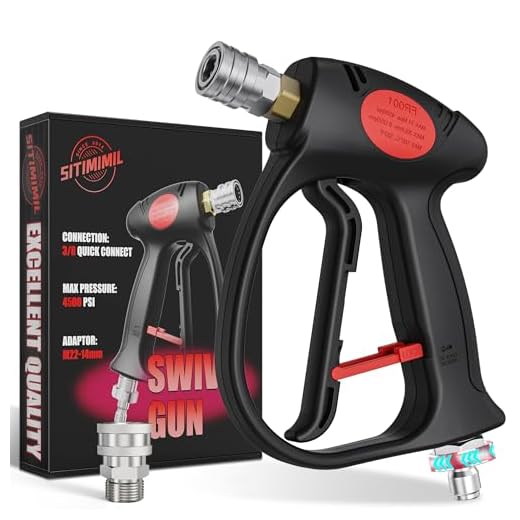
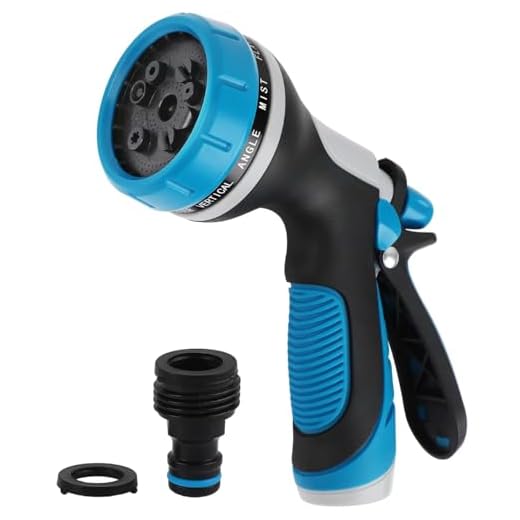

For those eager to achieve that thick, sudsy layer on vehicles or surfaces, my top recommendation is to utilise a mix of a quality foam sprayer and a regular garden hose. This method allows you to enjoy a foamy experience while maintaining simplicity and avoiding heavy machinery.
Begin by selecting a suitable foam mixing solution. Opt for a product designed for use with standard sprayers, ensuring it can create ample suds even under lower air and water pressure conditions. Mixing it at the right concentration enhances performance, leading to a more effective cleaning session.
Attach the sprayer to your garden hose, adjusting the nozzle for optimal foam distribution. The wide spray pattern enhances coverage, ensuring that the cleaning agent adheres well to the surface you’re targeting. This approach not only makes the process efficient but also enjoyable, as you see the foam cling beautifully to dirt and grime.
After application, allow the solution to dwell for a short period. This step increases the efficiency of the cleaning agent, breaking down stubborn residues. Follow up with thorough rinsing, ensuring all residues are washed away, leaving a spotless finish.
Instructions for Operating a Foam Applicator Without a High-Pressure System
For achieving a frothy application, the first step involves preparing a suitable mix of cleaning agent and water. Aim for a thicker consistency for optimal cling and cleaning effectiveness.
Utilise a garden sprayer, ensuring that it is clean and free from any previous chemicals. Fill the tank with your pre-mixed solution, then firmly attach the sprayer’s nozzle. Adjust the nozzle to create a fine mist or frothy spray.
Before beginning the task, rinse the surface lightly with water to remove loose dirt. Applying the foam with deliberate, even strokes will ensure thorough coverage. Avoid concentrating on one spot for too long to prevent uneven distribution.
Allow the foam to sit for a short period, typically around 5-10 minutes, depending on the product used. This dwell time enhances the cleaning process, breaking down grime and stains.
Once the foam has set, rinse the surface well. A hose with a spray nozzle is ideal for this purpose. Maintain distance to avoid any potential damage to the surface. Repeat the process as necessary for heavy tar or stubborn stains.
After completing the cleaning, clean your applicator thoroughly to remove residual cleaning agent, ensuring its longevity for future use.
Choosing the Right Foam Cannon for Non-Pressure Washer Use
Select a model specifically designed for low-pressure applications. Look for units that can connect to garden hoses and feature adjustable nozzles to control the foam’s thickness and spraying pattern. Such models typically offer better performance in situations lacking high-pressure systems.
Key Features to Consider
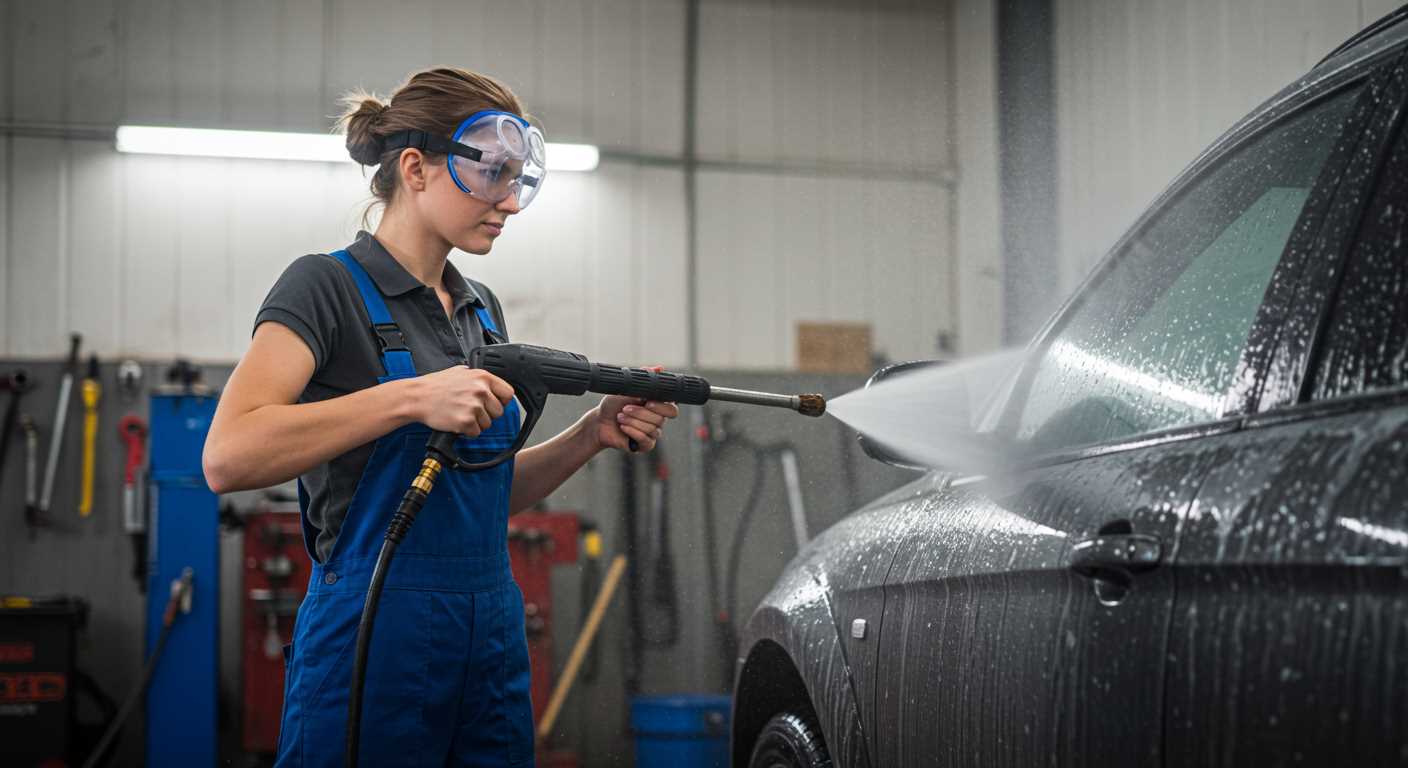
Pay attention to the material composition; a durable plastic body can withstand occasional impacts without damage. A wider opening for the detergent reservoir allows for easier filling and cleaning. Ensure compatibility with standard hose fittings to simplify attachment.
Detergent Choice
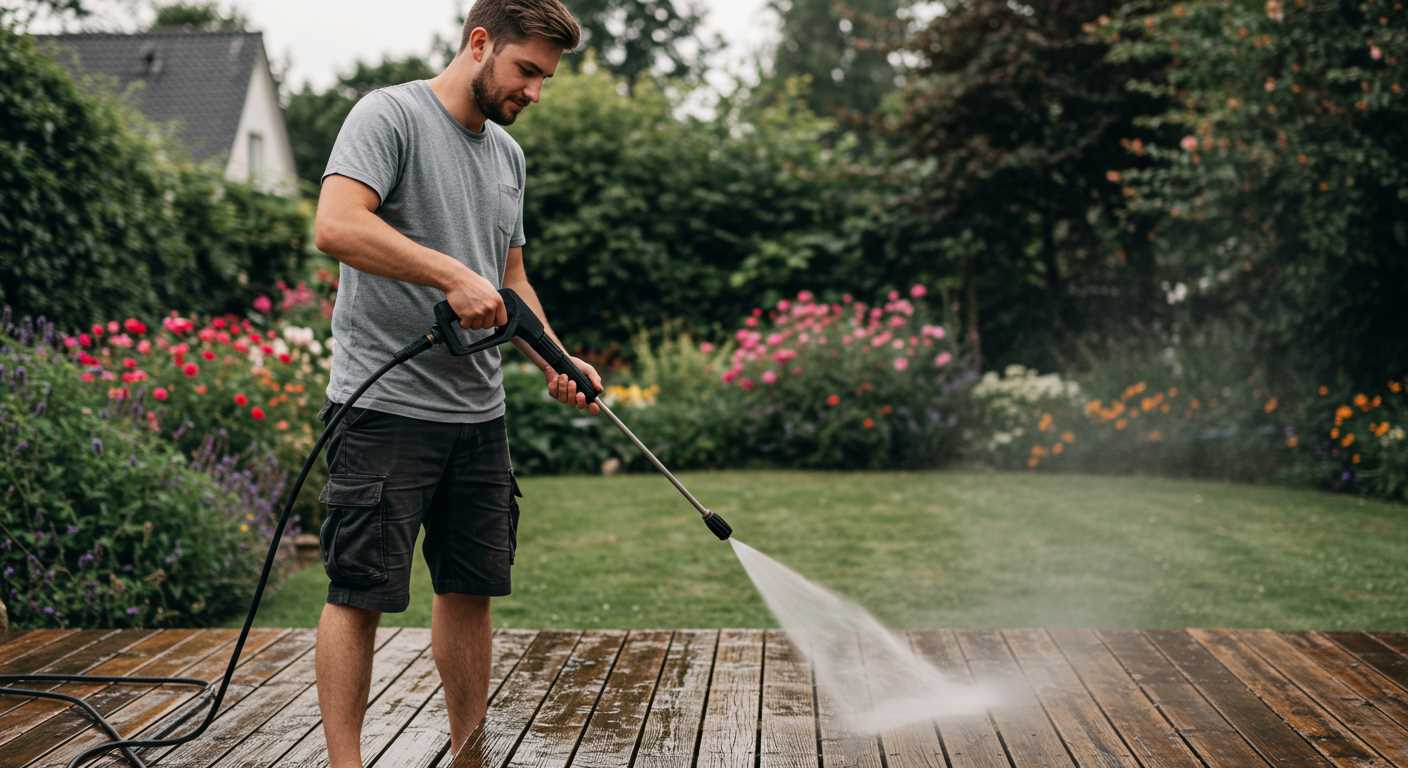
Opt for a concentrated formulation designed for use with low-pressure equipment. The right soap will produce thick, stable foam even at lower flow rates. Avoid generic cleaners, as they may not generate sufficient suds or could harm the surface being cleaned.
Preparing Your Foam Solution for Optimal Results
Select the right detergent, as its formulation greatly impacts the cleaning performance. Opt for a product designed specifically for bubble generation and safe on various surfaces. Ensure it’s compatible with the equipment, which can enhance the overall cleanliness of your items.
Mix the cleansing agent with water in a dedicated container. Adhere to the manufacturer’s recommended dilution ratios to ensure an ideal combination for maximum effectiveness. Typically, a ratio of 1:10 (cleaner to water) is effective; however, always consult the product instructions for specifics.
| Cleaner Type | Recommended Ratio |
|---|---|
| Concentrated Cleaner | 1:10 |
| Standard Cleaner | 1:5 |
| Eco-Friendly Option | 1:15 |
Stir the solution gently to ensure uniform mixing before transferring it into the container of your sprayer. Avoid excessive shaking to maintain the integrity of the bubbles. If foam fails to build up appropriately, consider adjusting the mixture by adding more detergent or reducing water volume.
Check the viscosity of the mixture. An optimal thickness is necessary for proper adhesion and dwell time on surfaces. If you find the solution too thin, add more cleansing agent gradually until desired consistency is achieved.
Lastly, ensure the mixture is fresh and properly stored if not in immediate use. Leaving it for too long can compromise its effectiveness, reducing the quality of the results. Prepare it shortly before application for best outcomes.
Creating Lather with Alternative Equipment
For effective sudsing without conventional cleaning machinery, there are several practical methods that can achieve similar results. Here are some hands-on approaches I recommend.
Using a Garden Hose
- Attach a high-quality nozzle to your garden hose. Choose a model with adjustable settings for varied spray patterns.
- Mix your desired cleaning solution with water in a separate container, ensuring a proper dilution ratio for maximum effectiveness.
- Fill a spray bottle with the solution. This allows for even application, facilitating coverage of surfaces needing attention.
- Spray the mixed solution onto the targeted area, allowing time for the product to break down grime.
- Follow up with a rinse cycle using the hose, adjusting the spray pattern to flush away loosened dirt and residue.
Manual Application with a Pump Sprayer
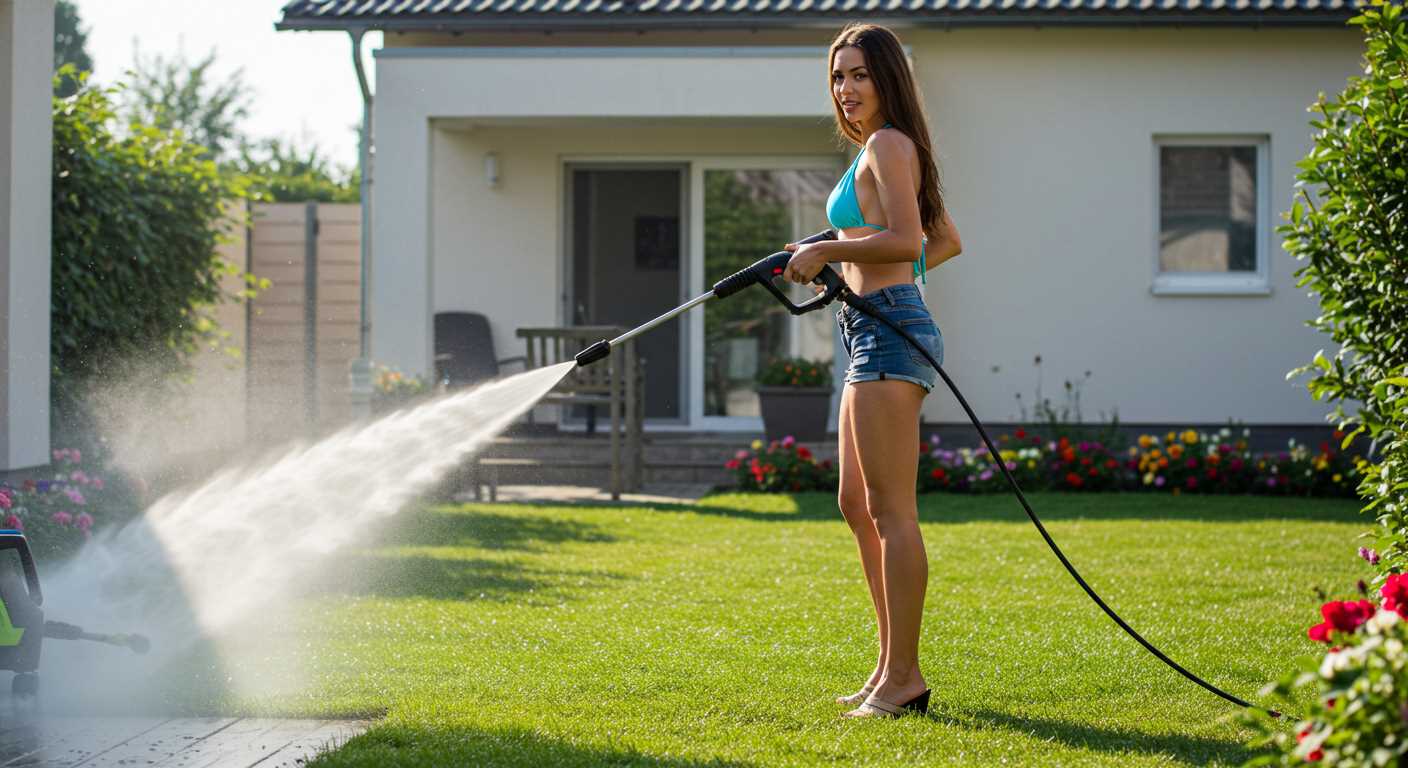
- Select a pump sprayer designed for thick liquids to accommodate the viscosity of your cleaning solution.
- Prepare your suds as detailed previously, then fill the sprayer with the mixture.
- Pressurise the sprayer by pumping the handle, which builds up sufficient pressure to create a lathery application.
- Apply the suds to the surface, ensuring even coverage and allowing it to sit for a few minutes to optimise cleaning power.
- Rinse with a hose or a bucket of clean water, ensuring all cleaning agents are thoroughly removed.
Exploring these alternative techniques allows for efficient cleaning, making sudsy solutions accessible for various tasks without reliance on standard washing tools.
Techniques for Applying Foam to Different Surfaces
For an even coating on cars, approach from a distance of approximately 3-4 feet. This ensures the product adheres without excessive dripping. Work in sections, starting from the top and moving downwards. This method prevents streaks and allows the cleaner to work effectively on dirt accumulation.
When tackling delicate materials like fabrics or upholstery, utilise a light misting technique. Hold the device further away to create a gentle application that does not saturate the material. Ensure even coverage while avoiding concentrated spots that could lead to fabric damage.
For hard surfaces such as concrete or tile, aim for a more concentrated application. Use a zig-zag pattern for an even distribution, followed by a gentle scrubbing with a brush to help lift embedded grime. Allow the product to dwell for a few minutes to enhance its penetration and effectiveness.
In the case of painted surfaces, maintain a moderate distance and keep the application steady to prevent runs. Overlap each pass slightly for complete coverage. If working with textured finishes, consider a more focused approach to fill in the crevices without excessive pooling.
When cleaning vehicles, focus on the wheels and undercarriage last. Apply a thicker layer to ensure that all accumulated brake dust and road grime are effectively removed. Rinse thoroughly after treatment to prevent any residue that could damage finishes over time.
For glass surfaces, maintain a high distance to create less runoff. Rinse promptly to avoid streaks as the cleaner dries. You might also consider applying in the shade to extend the working time of the cleaner, ensuring a more effective clean.
Tips for Rinsing and Finishing after Foam Application
Ensure thorough rinsing to remove residue effectively. Use a garden hose equipped with a spray nozzle for better control over water flow. Adjust the nozzle to a high-pressure setting for the rinsing process.
Technique for Rinsing
- Start from the top and work your way down. This allows dirt and suds to flow downwards, reducing the chance of redepositing grime.
- Maintain a consistent distance of about 2-3 feet from the surface while rinsing to avoid damage.
- Utilise a sweeping motion, covering the entire area uniformly.
Take care to inspect surfaces for any lingering suds or dirt. Areas like wheel arches or behind trim may require extra attention. Use a separate cloth or sponge to spot clean these hard-to-reach sections post-rinse.
Finishing Touches
- Dry the cleaned surfaces with a microfibre towel to prevent water spots and streaks.
- If applicable, apply a sealant or wax after drying to protect the surface and enhance shine.
- Check for missed spots or streaks before moving on to the next section.
Maintaining a methodical approach during the rinsing and finishing stage ensures optimal results, extending the longevity of surfaces and improving overall appearance.
Maintaining Your Foam Cannon for Longevity and Performance
Regular cleaning is vital. After every use, thoroughly rinse all components to eliminate residue. This prevents clogs and maintains optimal performance. Keep an eye on the nozzle; it should be free from build-up to ensure a consistent spray pattern.
Storage Practices
Store equipment in a cool, dry place to prevent degradation of seals and other materials. Avoid exposure to extreme temperatures or direct sunlight. It’s beneficial to keep the unit disassembled to prevent pressure on parts and reduce wear.
Periodic Inspections
Inspect gaskets and O-rings for signs of wear or damage every few uses. Replacing these components as needed can avoid leaks and enhance functionality. Additionally, check hoses for any signs of cracking or weakness. Keeping spare parts on hand can minimise downtime and ensure you are always ready for the next task.
FAQ:
Can I use a foam cannon without a pressure washer?
Yes, you can use a foam cannon without a pressure washer, but the results may vary. Typically, foam cannons are designed to work optimally with a pressure washer; however, you can still achieve decent results by using a standard garden hose with a foam nozzle attachment. This setup will not produce the same foam consistency or coverage, but it allows you to apply foam to your vehicle or surface.
What do I need to create foam without a pressure washer?
To create foam without a pressure washer, you will need a foam cannon attachment that fits on a garden hose. Additionally, you’ll require car wash soap that is compatible with foam application and water. Mixing the soap with water in the cannon reservoir will help generate foam when you apply it through the hose. A nozzle that can adjust spray patterns can also improve your results.
How do I mix soap for a foam cannon without a pressure washer?
When mixing soap for a foam cannon used with a garden hose, follow the product instructions for dilution, usually around 1 part soap to 10 parts water. Start by adding the water to the cannon reservoir, followed by the soap. Shake or stir gently to combine without creating bubbles, then attach the cannon to your garden hose. Adjust the nozzle for optimal foam coverage.
Is it effective to wash my car with foam from a garden hose?
Using foam from a garden hose can be effective, but may not be as thorough as with a pressure washer. The foam helps lift dirt and grime, but the lower pressure means you might need to scrub more to remove stubborn dirt. It’s a good approach for light cleaning or regular maintenance, but for heavily soiled vehicles, a pressure washer may yield better results.
Are there any tips for achieving thicker foam using a garden hose?
To achieve thicker foam using a garden hose, consider a few tips: first, use high-quality car wash soap designed for foam applications. Secondly, adjust the nozzle on your foam cannon to a narrower spray setting, as this can help create a more consistent foam. Lastly, ensure you have enough soap in the cannon and don’t rush the application; let the foam dwell on the surface for a few minutes before rinsing for better effectiveness.









